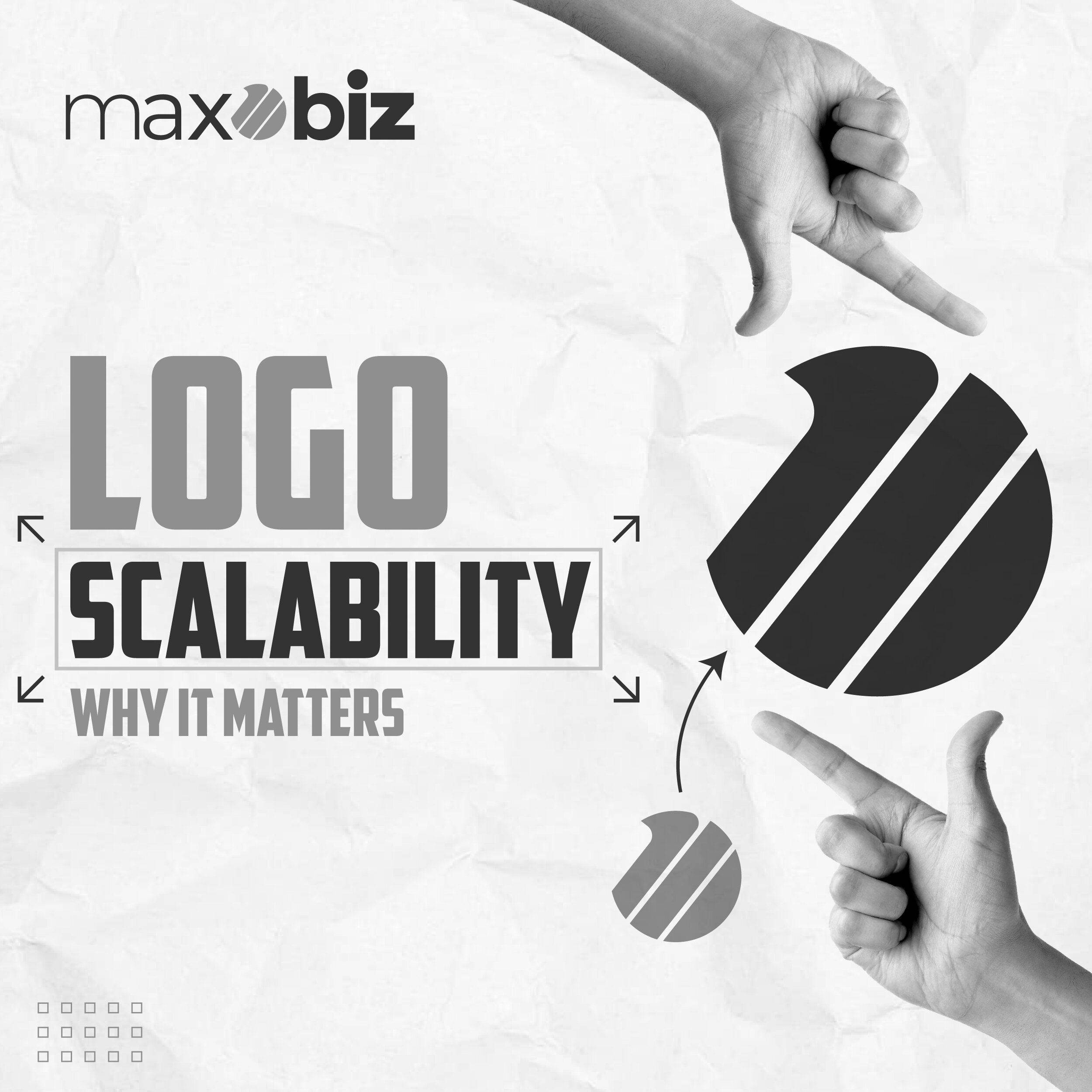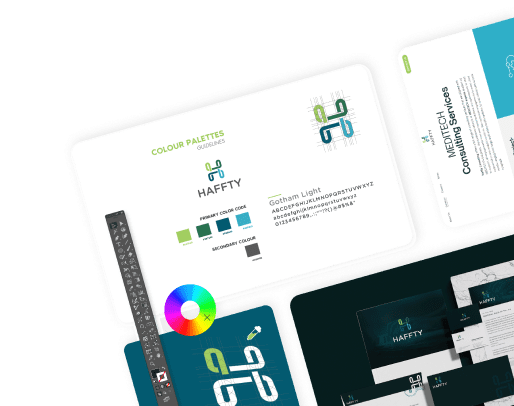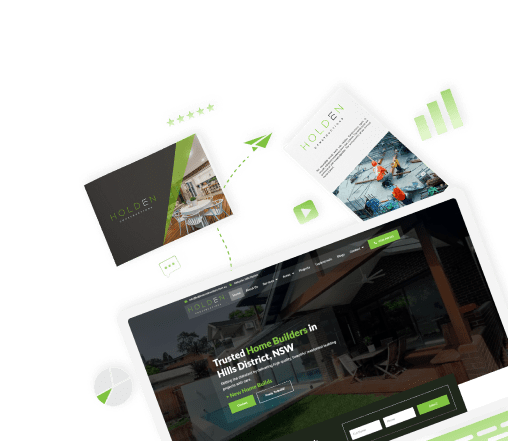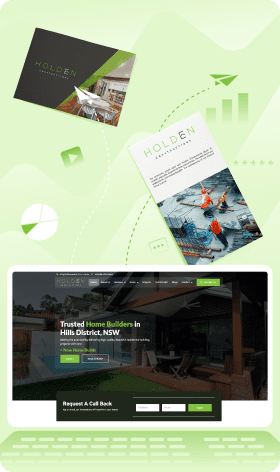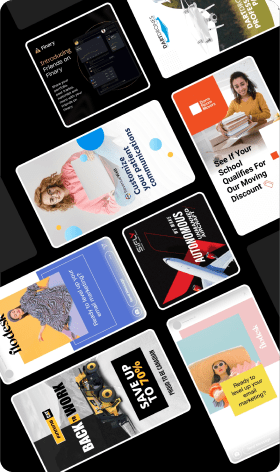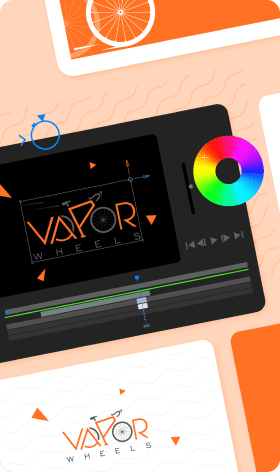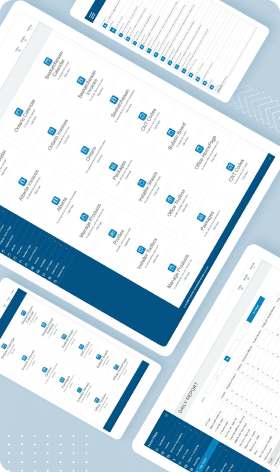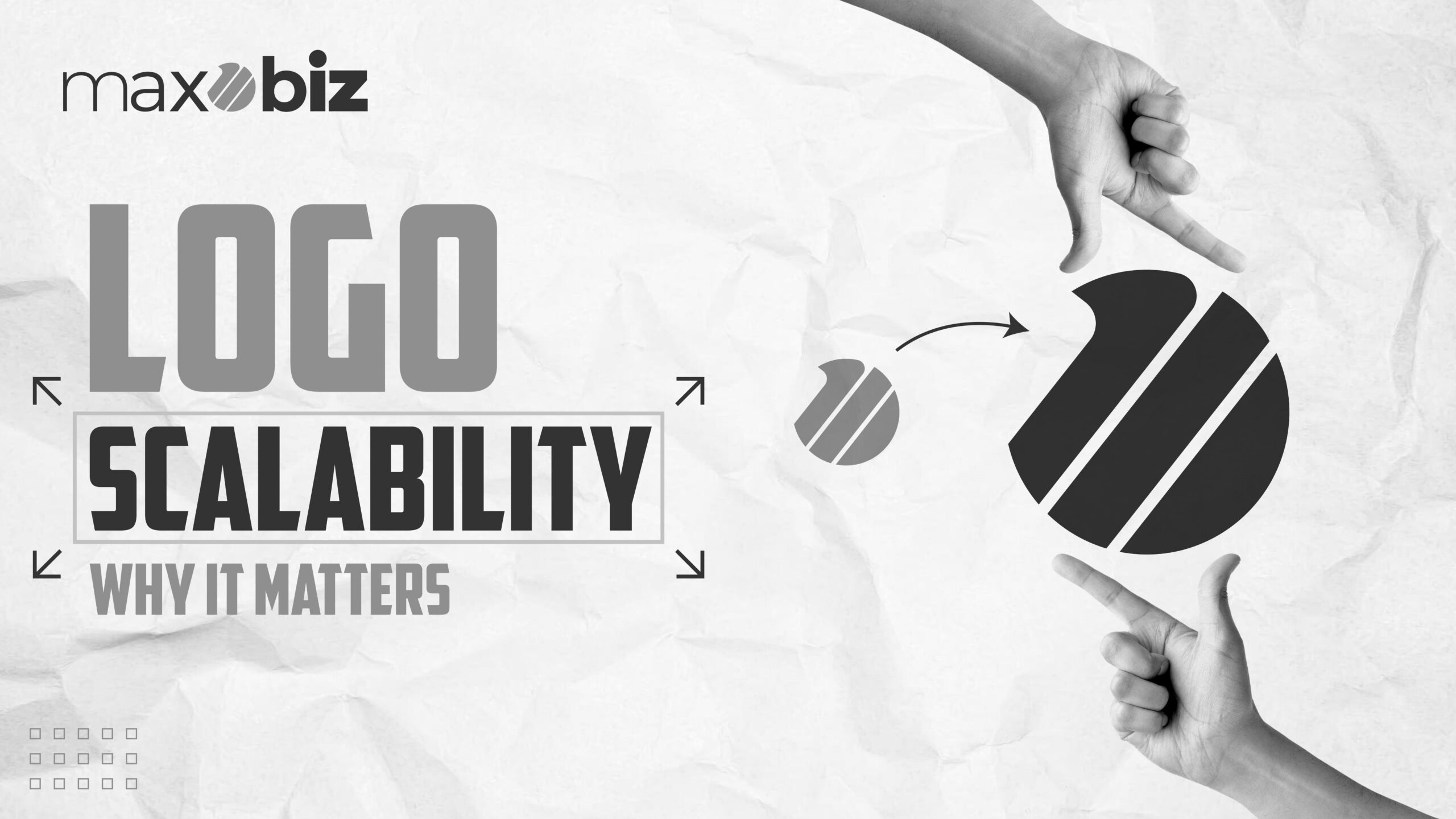In the ever-evolving landscape of branding, where visual identity is paramount, logo scalability emerges as a crucial element for success. A scalable logo transcends limitations, seamlessly adapting to various platforms and sizes without compromising its integrity and impact. Embracing scalability enables brands to maintain consistency, enhance professionalism, and ultimately, solidify their presence in the minds of consumers.
Unpacking the Significance of Logo Scalability
Introduction to the concept of scalable logos:
A scalable logo can be resized without losing its clarity, detail, or overall design integrity. This adaptability ensures that the logo remains visually appealing and recognizable across all mediums, be it a large billboard, a small website icon, or even a mobile app.
The Role of Scalable Logos in Modern Branding

Adaptability across Various Platforms:
Today’s brands operate across a diverse range of platforms, both online and offline. From social media profiles to marketing materials, a scalable logo ensures consistent brand representation across every touchpoint. This seamless integration strengthens brand recognition and fosters a unified visual identity.
How scalability ensures versatility:
A scalable logo serves as the foundation for various brand extensions. From merchandise and packaging to signage and digital presentations, the logo can be adapted to suit different formats and applications without losing its essence. This logo versatility facilitates brand expansion and diversification, allowing the logo to remain relevant and impactful across various contexts.
Upholding Brand Consistency:
Consistency is key to building a strong brand. A scalable logo ensures that the visual identity remains consistent across all platforms, reinforcing brand recognition and fostering trust among consumers. This consistency helps establish a sense of professionalism and reliability, which are crucial for building lasting relationships with customers.
Showcasing Professionalism:
A well-designed, scalable logo exudes professionalism and attention to detail. This meticulous approach reflects positively on the brand, fostering trust and confidence among stakeholders. A logo that adapts seamlessly across various sizes and formats conveys a sense of competence and preparedness, further strengthening the brand’s image.
Boosting Brand Recall:
A scalable logo reinforces brand recall by consistently presenting the same visual identity across all platforms. This repetition enhances brand recognition and increases the likelihood of consumers remembering the logo and associating it with the brand.
Flexibility in Marketing Strategies:
The scalability of a logo provides brands with the flexibility to adapt their marketing strategies across various channels. Whether it’s a social media campaign, a print advertisement, or a digital marketing campaign, the logo can be easily resized and adapted to fit the specific requirements of each platform. This versatility allows brands to maximize their reach and impact, regardless of the medium used.
Crafting Scalable Logos: Key Design Strategies
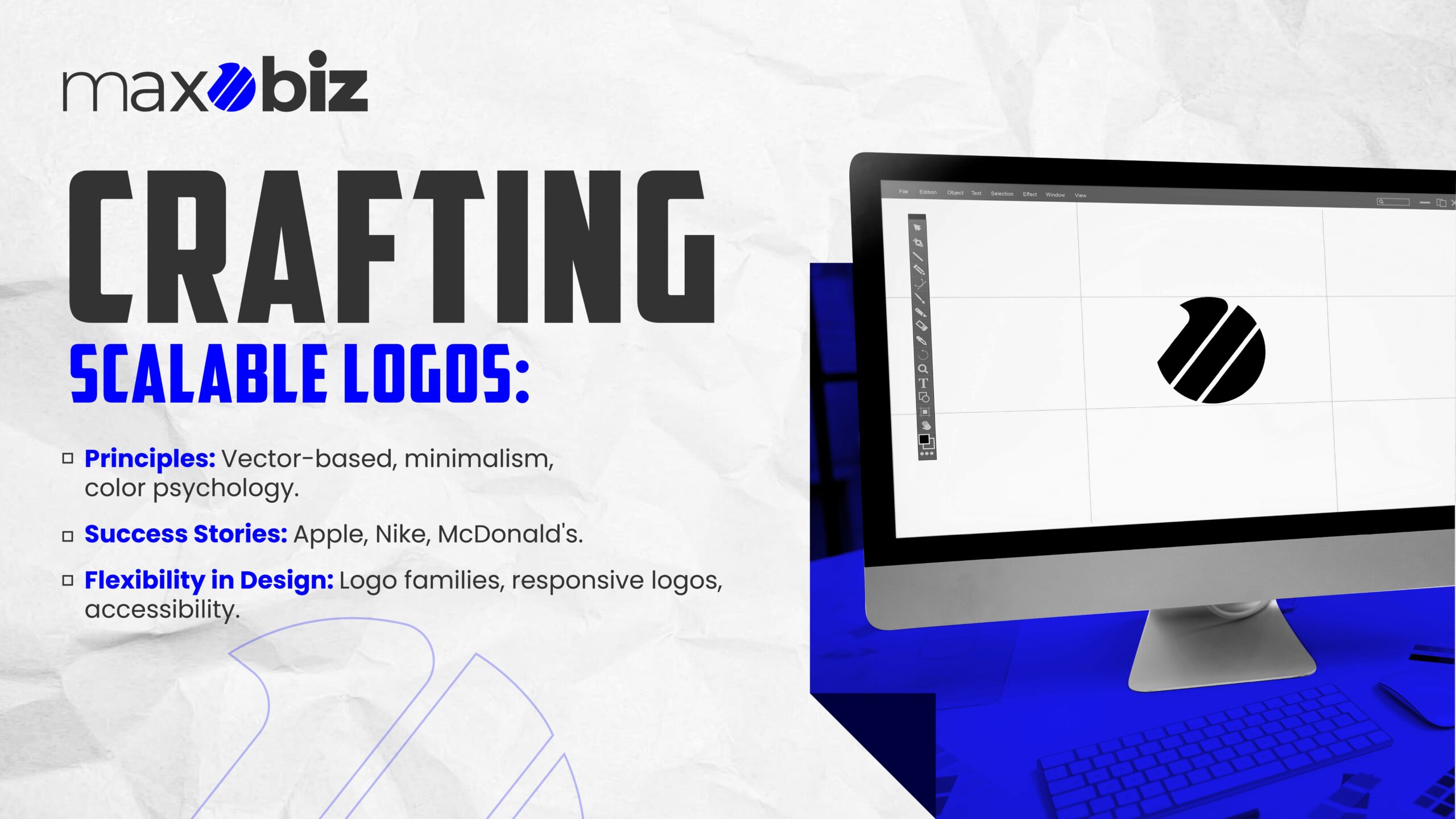
Embracing Simplicity:
Simpler designs often translate best across various sizes and platforms. Avoiding intricate details and focusing on clear, concise shapes ensures that the logo remains recognizable even when scaled down significantly.
Prioritizing Legibility in Typography:
The choice of fonts plays a crucial role in logo scalability. Selecting fonts that are clean, legible, and adaptable across various sizes guarantees that the message conveyed by the logo remains clear and impactful.
Incorporating Memorable Icons:
Iconic elements, when used strategically, can enhance a logo’s memorability and recognition. These elements should be simple and easily identifiable even at small sizes, adding a unique and memorable touch to the design.
Selecting a Scalable Colour Scheme:
Colour plays a significant role in branding. Opting for a limited colour palette that scales well across various mediums is crucial for maintaining consistency and clarity. Avoiding overly complex gradients or intricate colour combinations ensures that the logo remains vibrant and visually appealing even when resized.
Utilizing Negative Space Wisely:
Negative space, the empty area surrounding the logo’s main elements, plays a crucial role in composition and legibility. Utilizing negative space effectively can enhance the visual impact of the logo, while also ensuring that the design remains clear and recognizable when scaled down.
Success Stories: Iconic Scalable Logos
Apple’s Minimalist Mastery:
Apple’s logo, a simple bite out of an apple, embodies the essence of scalability. Its clean lines and minimalist design ensure that it remains recognizable across various sizes and formats, reinforcing the brand’s image of innovation and simplicity.
Nike’s Swoosh: Simplicity Wins:
The Nike swoosh is another exemplary case of a scalable logo. Its simple checkmark design is instantly recognizable and transcends language and cultural barriers. This adaptability has allowed Nike to build a strong global brand identity.
McDonald’s Golden Arches: Iconic & Scalable:
The golden arches of McDonald’s have become synonymous with the fast-food giant. The logo’s simple design and bold colour scheme make it instantly recognizable and easily adaptable across various platforms. This scalability has played a significant role in the brand’s global expansion and enduring success.
Logo Scalability in the Digital Age: A Comprehensive Guide
Understanding the Dynamics of Scalable Logos:
The digital age presents a unique set of challenges and opportunities for brands. With the proliferation of online platforms and devices, the need for a logo that can adapt and thrive in this dynamic environment is more critical than ever. Several fundamental principles underpin successful scalable logo design:
1)Vector-based design: Vector graphics, unlike raster graphics, are resolution-independent, meaning they can be scaled infinitely without losing quality. Utilizing vector software like Adobe Illustrator ensures that your logo maintains its crispness and clarity regardless of the size.
2)Minimalism: Simplicity is key when it comes to scalability. Complex logos with intricate details often become illegible when resized, diminishing their impact. Opting for a clean, uncluttered design ensures that your logo remains recognizable and effective across various formats.
3)Colour psychology:
Colours evoke emotions and trigger associations, a concept known as colour psychology. Selecting a limited colour palette that aligns with your brand identity and resonates with your target audience is crucial. Utilizing colours that offer sufficient contrast and remain vibrant even at small sizes ensures visual impact and legibility.
4)Whitespace: Negative space plays a critical role in logo design. It allows the key elements to breathe, preventing the design from feeling crowded or overwhelming. Strategic use of whitespace also enhances legibility and ensures that the logo retains its visual appeal when scaled down.
Ensuring Brand Cohesion across Multiple Channels
In today’s interconnected world, brands exist across multiple channels, from social media platforms to online marketplaces and physical stores. Maintaining consistency in branding is crucial for building a strong and recognizable brand identity.
Here are some key strategies to ensure brand cohesion across various channels:
1)Develop a comprehensive brand guideline: This document outlines the official usage of your logo, including color codes, typefaces, and minimum size specifications. This guideline ensures consistency across all marketing materials and brand applications.
2)Utilize a brand management platform: Digital asset management platforms provide a centralized repository for all branding materials, including logos, fonts, and colour palettes. This centralized approach facilitates collaboration and ensures that everyone uses the correct logo variations and assets.
3)Partner with a professional designer: If unsure about the scalability of your logo or require assistance with adapting it for specific platforms, consider collaborating with a professional designer. Their expertise can ensure that your logo, which is one of the key branding components, maintains its visual impact across multiple channels.
Designing for Flexibility: Scalability across Media
The digital age demands flexibility. Brands need to be prepared to adapt their logo to various formats, including social media icons, website favicons, and mobile app icons.
Here are some strategies for designing a logo that scales seamlessly across various media:
1)Create a logo family: This includes variations of your logo in different sizes and configurations, allowing for optimal use across various platforms.
2)Utilize a responsive logo: This innovative approach utilizes web technologies to automatically adapt the logo’s size and layout based on the device and screen size.
3)Prioritize accessibility: Ensure that your logo is accessible to individuals with disabilities by providing sufficient contrast and adhering to accessibility guidelines.
Future-Proofing Your Brand’s Visual Identity
A well-designed, scalable logo is an investment that pays dividends over time. By investing in a logo that can withstand the test of time and adapt to evolving trends, you are future-proofing your brand’s visual identity.
Here are some tips for future-proofing your logo:
1)Avoid trends: While incorporating certain trendy elements can add a contemporary touch, avoid relying heavily on fleeting trends that may become outdated quickly.
2)Focus on timeless design principles: Classic design principles like simplicity, balance, and proportion never go out of style. By grounding your logo in these principles, you ensure that it will remain relevant and appealing for years to come.
3)Embrace adaptability: Be open to adapting your logo subtly over time to reflect the evolution of your brand and market trends. However, ensure that the essence of the logo remains consistent to maintain brand recognition.
Economic Benefits of Scalable Logo Design
Investing in a scalable logo design offers significant economic benefits in the long run:
1)Reduced costs: A scalable logo eliminates the need to constantly redesign or adapt the logo for different applications. This saves time and resources, leading to cost efficiency.
2)Increased brand recognition: A consistent, recognizable logo across all platforms fosters stronger brand recognition and recall, ultimately leading to increased sales and customer loyalty.
3)Enhanced brand equity: A strong, well-designed logo contributes significantly to brand equity. A scalable logo that transcends time and trends further strengthens brand value and enhances its competitive advantage.
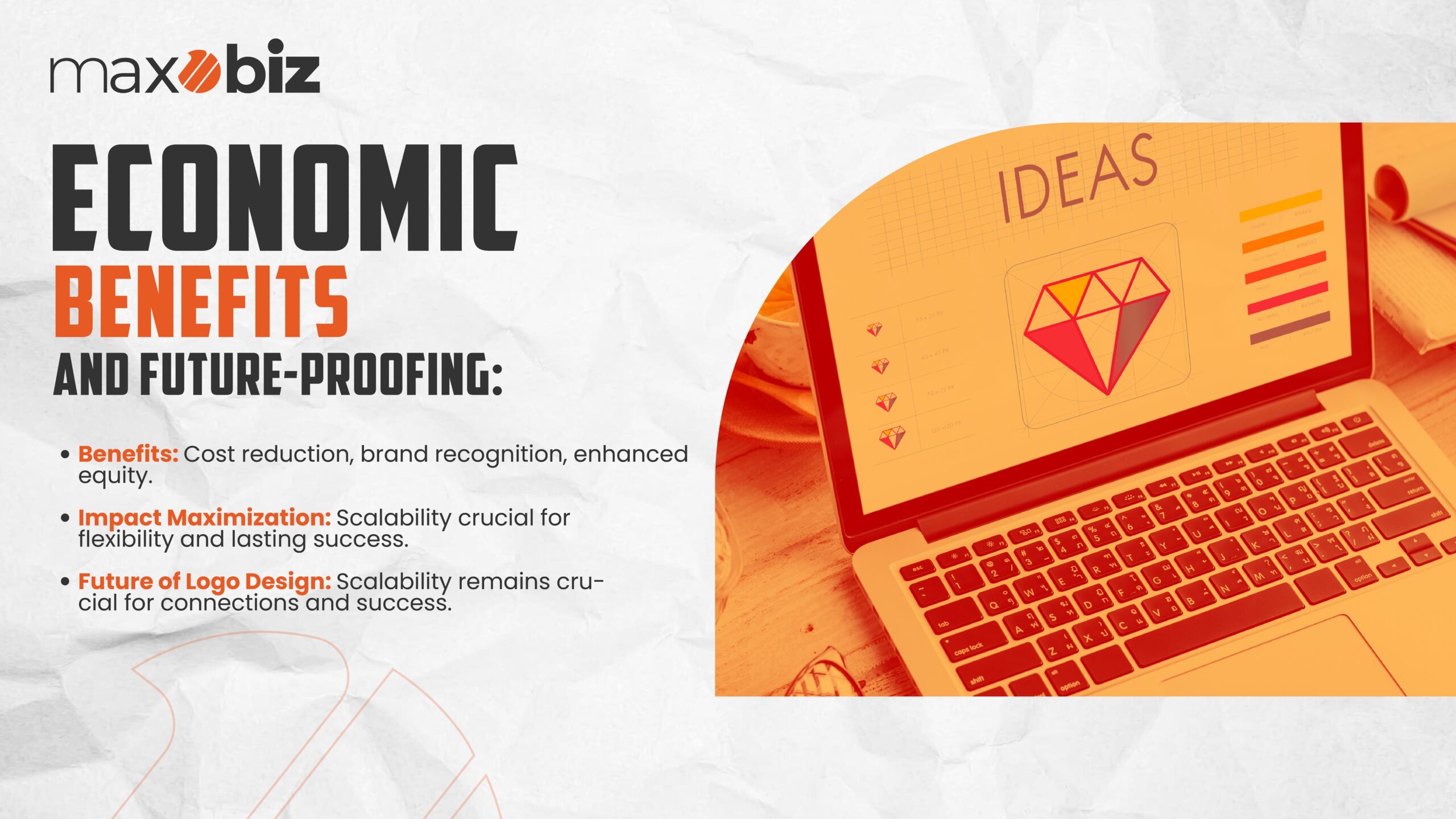
Maximizing Impact with Scalable Designs
Logo scalability is no longer a luxury but a necessity in today’s dynamic digital landscape. By embracing scalability as a core principle of your brand identity, you can unlock a multitude of benefits, including enhanced brand recognition, increased flexibility, and sustained growth in the ever-evolving world of branding.
Wrapping Up: The Future of Logo Design is Scalable
As we look to the future of branding, it is evident that scalability will remain a crucial factor for success. Brands that embrace scalability and invest in logo designs that can adapt and thrive across various platforms will be well-positioned to build strong, lasting connections with their audiences and achieve their long-term goals. In conclusion, while the world of branding may constantly evolve, the principles of logo design remain fundamental. By prioritizing simplicity, legibility, and adaptability, brands can create logos that not only stand the test of time but also effectively communicate their message and resonate with their target audience.
And as the digital landscape continues to expand, scalability will become increasingly essential for brands to remain competitive and achieve lasting success. This comprehensive guide has explored the key considerations for crafting a scalable logo design and provided valuable insights into the benefits this approach offers. By implementing these strategies and prioritizing scalability throughout the design process, brands can develop a visual identity that is both timeless and impactful, paving the way for enduring success in the ever-evolving world of branding.
